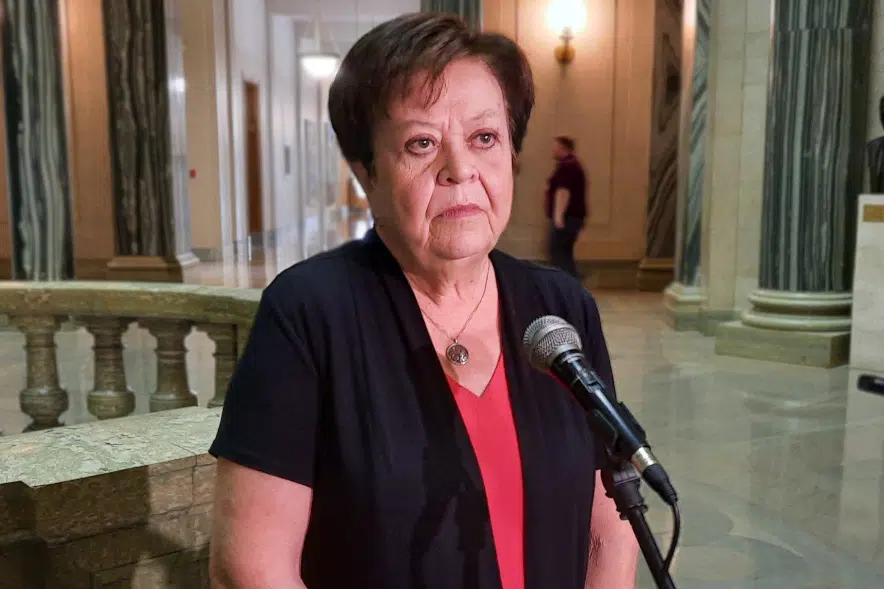Saskatchewan’s finances were rosier in 2022-23 than was expected one year ago.
When that budget was released, Finance Minister Donna Harpauer said the province would have an operating deficit of $463 million. In the Public Accounts document released Thursday, the province reported an operating surplus of $1.58 billion — a $2.04-billion improvement over the budget.
It was also a $480-million increase from the mid-year report in November.
Harpauer said this is a positive for the province.
“I think that it reflects how the province’s economy recovered more rapidly from the years of COVID than we had anticipated, and as everyone knows, we’ve got very strong revenue from our resources, mostly uranium, potash and oil,” Harpauer said during a media conference at the Saskatchewan Legislative Building.
Much of the extra revenue came from higher oil, potash and uranium prices and sales – which are higher in large part due to the war in Ukraine.
The government said the $1.58-billion surplus allowed it to pay off $1.5 billion of the provincial operating debt, saving $66 million per year in estimated future interest costs.
Harpauer defended not putting the extra money into programs or services by reiterating what’s she’s said often, that it is mostly coming from resources, which can be volatile.
“We must be very cautious that we don’t bake it into ongoing operating funding when you need those dollars year over year,” she said.
She also pointed out the measures the government took last year, including sending out the $500 “Moe bucks” payments and reducing the planned PST expansion.
Those payments — the Saskatchewan Affordability Tax Credit Payments — cost the government $422.7 million.
Harpauer said things look pretty positive in the current fiscal year, but it’s only a few months in.
“A better indicator is when you get to that second quarter and you’ve got more data that you can work with and say that, ‘Yes, it’s holding’ or, ‘No, it’s not,’ ” said Harpauer.
If the strength holds in the budget, Harpauer said she would like to look at the PST.
“But we’re way too early to say that we can do that at this point in time,” she said.
The details
“Saskatchewan led the country with 5.7 per cent GDP growth in 2022 and is experiencing continued economic growth so far in 2023,” Harpauer said in a media release that accompanied the Public Accounts document. “As a result, in 2022-23 Saskatchewan experienced strong revenue from our resource sector and from corporations achieving success in our province.
Revenues were $3.44 billion higher than expected in the budget, at $20.6 billion. According to the government, that increase was due in part to high oil and potash prices as well as higher corporate income tax, personal income tax and provincial sales tax revenue in 2022-23.
Non-renewable resource revenue was $4.60 billion in 2022-23, the government said. That represented an increase of $1.69 billion (or 58.2 per cent) over what was forecast in the budget.
Taxation revenue was $9.81 billion in 2022-23, an increase of $1.72 billion (or 21.2 per cent) from the budget.
The government said the revenue increases were partially offset by a decrease in net income from Government Business Enterprises, caused by increased costs for power generation and a decline in investment returns.
Total expenses for the year were $1.39 billion higher than forecast in the budget, at $19 billion.
“Agriculture expense saw the most notable impact as drought conditions significantly improved in parts of the province resulting in crop insurance payouts lower than the prior year but greater than budget,” the report said, noting the drought in the southwest was a major factor.
The government said its overall financial position as of March 31 of this year is an accumulated deficit of $1.60 billion.







